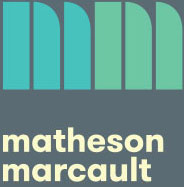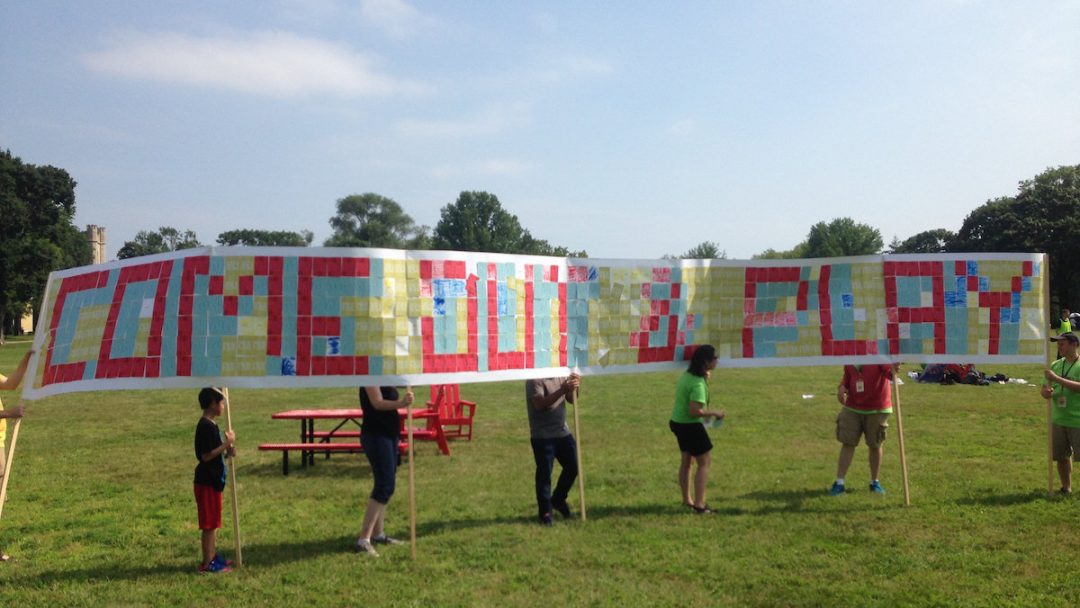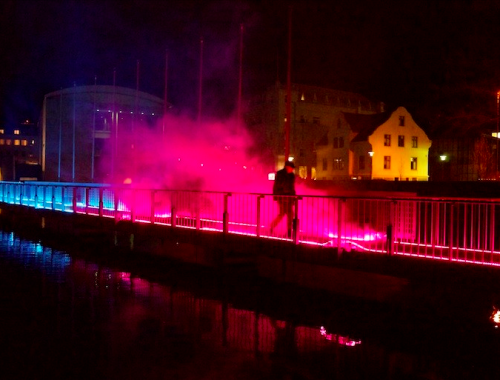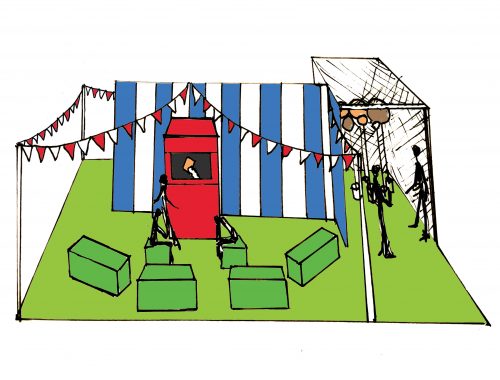As part of our research project for the King’s College London Arts and Humanities Festival, we’ve been interviewing different curators, designers, artists and architects about playful work for public space. This interview is with Greg Trefry, a game designer who co-founded the games festival Come Out & Play (and is director of the New York branch); also co-founded Gigantic Mechanic, which makes games with real-world physical elements; and teaches at NYU.
This is an extract from a longer interview, which will be included in full in a report at the end of our research project. The picture above is from Come Out & Play 2015, taken by Josh Lee.
US: We’ve talked before about people being able to drop in and out of games in public spaces – and not having to install anything, and the difference that makes to persuading people to actually play.
GREG: It’s a weird design problem. Most games – as opposed to playful things – are delimited by time and space. People can push the boundaries on some of those (“oh you can run around anywhere”) but a game still usually starts at a specific time and ends at a specific time, or you’re moving towards a winner and you have to be there at the end of the game to see that.
So how do you make an experience that isn’t ruined if players can drop in and out at any time?
It’s a question that led us to do away with a lot of the constructed parts of the game and really figure out the playful fun thing at the heart of an idea. Like in Scattershot [a game where players join in on a big screen through their phones], the fun thing is you shoot people with a spaceship. And as a player you can go “I see the spaceship blasting people, that’s joyful, I did that, that’s cool.” And you can get better at it if you want to – or just play for thirty seconds and move on.
US: Which connects a little to my next question, actually. With different projects, how do you think about what sort of interactions you’re happy with? Do you think consciously about “oh I want people to stop and play for two minutes”, “I want people to stop and smile”, “I want spectacle”?
GREG: We definitely have intended consequences, things that we want people to feel, or we want the game to play a certain way or explore the theme a certain way. We use Marc and Robin’s MDA framework: there’s Mechanics, Dynamics and Aesthetics. We usually think of the aesthetics as something we want people to feel, or to see, or we have a vision of how we want the game to operate. Then we design towards that as much as we can in a purposeful way.
When you start off making games you’re more likely to stumble upon mechanics. But over time, as you make different games in different situations, you get a better sense of how you can get a specific outcome.
We made three games for Come Out & Play this year and they all had a different aesthetic. For Block Party we wanted to explore a collaborative video game, a game where you’re working together and communicating. It’s like a 15-player collaborative Tetris where everyone’s yelling at each other, and everything we did to develop it was about pushing people to negotiate what they’re doing. So people in early version were initially just playing Tetris side by side – which is pretty fun, because Tetris is pretty fun, but it feels like cheating. So we thought about how to make it more collaborative – and added elements like tangrams where you’re building blocks in shapes. All of a sudden you got people yelling at each other “no, don’t break it” “I’m coming in under here” and talking about what they’re doing and planning – and that’s what we wanted.
And then with A Game of Foams we wanted people to say “that looks like a ton of fun, I want to do that right now.” We wanted people to feel like a Jedi knight or like they’re in Game of Thrones for even two minutes.
Mechanically, we started off at the point of “well Ninja works pretty well as a structure, but we’ll give them foam swords, and we’ll put them in teams so they’re working together”.
Before the game starts we explain the rules to players and they’re like “okay we’re ready to go” – but then we tell them “no, you’re not. Don’t rush in. Take a minute, take a moment, negotiate with your team and plan what you’re going to do”.
So the three teams go into a corner and talk and say things like, “I’m going to do this, you do that” – plotting together. And most of the time it doesn’t make any difference! But they feel like they’re planning as a team, they’ve come up with a strategy. And that was very intentional.
And the last game we made was Tiki Taka Soca. Last year we made a game called Super Skinny Soccer. I’m really proud of this one for how it uses the location. There’s an alleyway in DUMBO that’s a metre and a half wide and a hundred yards long, this super skinny long alley. So we thought: hey, we’ll put soccer in here and structure it like foosball, with goalkeepers at the end and then separate areas inside. We alternated players in defined areas within the alley, someone from team 1, then someone from team 2, then someone from team 1 and so on. Players have to stay in their area, so they’re trying to kick past people or around them by bouncing it off the wall.
And it worked really well. The games gives that feeling of mastery that I never get when I play soccer, because I suck at soccer – I get the ball and I’m like “Great, I got the ball!” and then someone runs up and takes it away. But in Super Skinny Soccer, when you have the ball that doesn’t happen – and it’s really empowering.
So this year we thought about how it might work to make a field game where you get that sense of empowerment, a power moment where you feel good and get to choose what to do even if you’re not good at soccer.
We broke up the field into quadrants and looked at the idea of “tiki-taka football” – and then we broke up the field more into triangles. We told players they couldn’t move between the triangles, they had to pass around. For people who aren’t good at soccer this means you get to have that moment of feeling you have the ball and you can think about what to do next.
So that’s how our development process works I guess. When we’re designing, we think about what we want people to feel at the end, how we want them to behave, what moments we want to deliver to players. It’s a tricky thing to do and takes a lot of practice to get there.
US: I’m also really intrigued by this Times Square project you’ve been doing with NYU students – you worked with them over the course of, what, a few months?
GREG: So Play Times Squared was originated by the Times Square Alliance, which is a business improvement district for Times Square. It has an arts wing run by Sherry Dobbins who’s super-sharp, really nice. They’ve been doing a residency program, and she was like “people always want to do games, they send proposals in” – but her concern is that in Times Square things just get lost. It’s such an overwhelming space. So she wanted to do a bunch of different things, a festival of games rather than just one game.
Luke Dubois (from NYU) who had previously been an artist in their residency program and Frank Lantz (from the NYU’s Game Center) reached out to me and asked if I’d be interested in teaching a class at NYU to develop games for this event.
The class was structured specifically around designing games for Times Square. We went to the square a lot, spent a lot of time hanging out there, thinking about what people are doing there, what their behaviour is, how we can interact with them, what can we get away with – what will people be willing to do? What can we ask of them?
And we playtested a bunch of games there. The students were awesome, and ended up working like a little design collective – we prototyped a bunch of stuff and shared that and then they all ended up helping out each other and working on other people’s projects. The group ended up making nine different games which was really impressive.
When we ran that festival it was very different from Come Out & Play. At CO&P we get a lot of walkups now, sure, but we also get a lot of people who come for CO&P. And it takes over wherever it is, fills the space.
But because Times Square is – well there are very few public spaces like it. It’s like drinking from a firehose of people. It’s like being in the middle of a river all the time. We had to think: how are we going to design for this? We won’t get the sort of critical mass we get for CO&P where we can be like “let’s all play this 15-minute game, sit down and I’ll explain it”. This had to be much more porous and forgiving.
Some of the games we modified on the fly during the three days that Play Times Squared ran, because even after all the thinking we’d done they were still just a bit too gated.
US: With things like the Symphonic Picnic it sounds like there’s these objects that you interact with as a player in a very unstructured way. Did you even have to have facilitators for that or did people just get drawn towards it?
GREG: That one was surprising to me! The designers wanted to make an ambient experience, very meditative. And I was a bit dubious. Times Square is actually a meditative place already. Everyone has this notion that in Times Square everyone’s really busy all the time and honking horns constantly and yelling at each other, but if you look around there’s a whole lot of people just doing nothing. They’re on a lunch break or sitting and thinking or sitting and not thinking.
What the designers did very smartly was to go “okay, we’ll put it on the ground, we’ll give people a different perspective, we’ll invite them to lie down”. And they didn’t facilitate it. They put out the astroturf, made these delightful little mushrooms with headphones hanging out, and there’s an ambient track playing on the headphones or you can push buttons on the mushrooms to make other noises.
Then they invited people to lie down. It works better once someone else is there – once someone else is doing it you can see what to do, you know what behaviour is okay. So they didn’t facilitate it, so much as illustrate what to do. And then people would hang out for long periods of time.
Sometimes people would poke for a minute or two, sometimes people would lie there or sleep for an hour or two. My favourite moment was these two teenagers who’d been there listening for a while – looking at Facebook, listening to the sounds, occasionally pressing the buttons. And eventually they stopped and one was like “oh, I was so out of it, I feel like I was floating out of my body up into the sky”.
So you’re lying on the ground looking at the sky on a hot day in Times Square and that leads you into sort of a meditative experience.
US: Anything else from that project that surprised you?
GREG: There were a couple.
There was a game called High Five Zone where the designers put out a lot of mats that you could move between – it was like hopscotch but you can only advance by high-fiving people. You could high five other players, or you could high five friends or passers by.
When that worked it was beautiful – you’d get people high-fiving passers-by and strangers. The design intention was to give you a feeling like at a sporting event when you run down a hall and you’re slapping people hands.
The really hard thing with that one is it was so short. It’s such a delightful playful thing, and once it was going it was great – but because it was so short it would go away. The mats were on the ground but without someone playing a game to let you understand what to do they just sat there. So it would come up and ebb away, and they’d have to illustrate it again.
Once it got going it was great but it’s an interesting problem with very short playful experiences. That game was super-tight and did exactly what it set out to do. But places like Times Square have no memory – everyone who sees something is gone in thirty seconds and the new people are like “what is this shit on the ground”.




